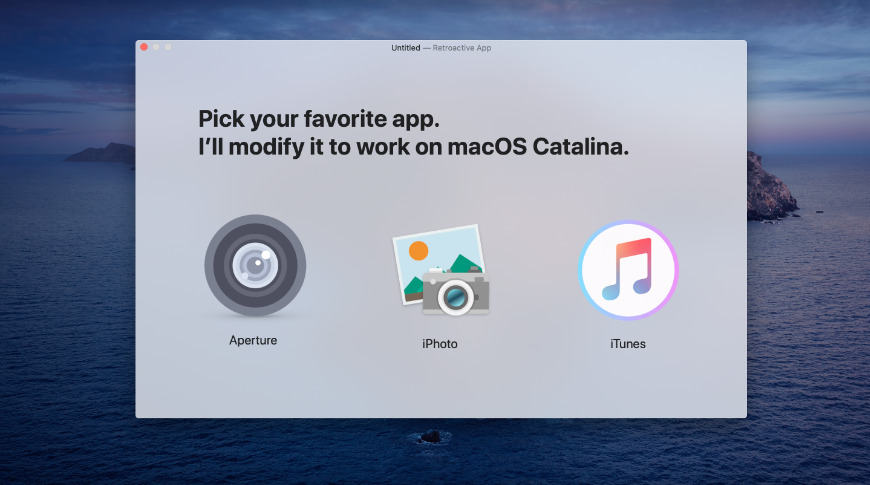The break up
The scan and print drivers are up to date for Mac OS 10.12.5. The printer connects to the Lan network, and says 'Connected' on its screen. The computer says the computer is not connected for printing or scanning. I've reset the modem and router, restarted the computer and printer, all multiple times. Begin by restarting your Mac. When your computer is about ready to pull up the black loading screen, press the Option + Command + P + R keys simultaneously. Keep holding those four keys down until. Plug the USB which is not showing up to your Mac computer. If it doesn't show up, click Apple icon and select 'Sleep'. Wake up the computer after a few seconds by pressing any key. Shut down the Mac, unplug the power cord, reattach it after 15 seconds. If this doesn't work, we should suspect the corruption issue at this moment. Pick up any Mac, and it will function the same as the others — with some caveats. Thanks to macOS, there will be little to no difference between how a desktop and laptop perform.
The headline of Apple's press release reads, 'Apple to Use Intel Microprocessors Beginning in 2006.' How did it come to this? What's it all mean? Here's how I feel as a Mac enthusiast since 1984, an engineer by education, a programmer by profession, and an all-around Apple geek.
I'll first tackle why I think this happened. I have no inside information, only educated guesses. I don't need to guess very much about the bottom line, however. Steve Jobs came right out on stage and said that Apple could not get the CPUs it wanted from IBM, and I believe him. The speculation comes in when I consider why this was the case.
I don't think the reason was technical. IBM is capable of designing and fabricating the CPUs that Apple wants. The G5 and accompanying chipset architecture was nice. Maybe not the best of the best, or not for very long anyway, but competitive. Today, IBM is designing very interesting and powerful CPUs in cooperation with (and under contract to) Microsoft, Sony, and Nintendo. These chips are a radical departure from IBM's bread and butter (the Cell in particular).
Given Apple's requirements for laptop, desktop, and server chips, IBM could get the job done, leveraging its traditional strengths in the server market combined with its new-found expertise in low-power, low-cost game consoles. There have been huge threads in the Macintoshian Achaia forum discussing exactly what IBM could do and how they could do it, all filled with (mostly) plausible scenarios. (Some of them even mentioned Freescale, née Motorola.)
So, why didn't it happen? I can think of two reasons, both of which probably contributed to the end result. First, it seems like IBM promised Apple something that it failed to deliver: a 3GHz G5 one year after the 2GHz G5 was announced. Steve Jobs stood on a public stage and declared it a fait acompli, presumably because IBM told him that it would happen. (Granted, this may be a big presumption, knowing Jobs...)

Two years later, a 3GHz G5 has not appeared. Steve Jobs looks foolish, and is undoubtedly pissed. This is the same guy who, back in the G4 days, famously (allegedly) told a senior Motorola executive, 'I can't wait until we don't need you anymore.' This was in the middle a meeting about future CPUs that Apple still needed from Motorola!
AdvertisementNow Jobs is angry at IBM, and an angry Jobs is not pleasant to deal with. But things could be patched up, right? Maybe, but maybe IBM didn't see any reason to smooth things over and kiss the ring, as it were. Apple buys a lot of chips, but IBM CPUs are in every one of the three major upcoming game consoles. The market-share winner alone will assure tens of millions of CPU sales.
And IBM doesn't really care who wins because they get paid for every single unit sold: Sony, Nintendo, or Microsoft. What's 5 million Macs a year compared to 20 million game consoles? And over 5 years, IBM can sell the 'same chip' (maybe with fabrication refinements that save IBM money anyway) up to 100 million times. It's a lot harder to do that with a Mac (although Motorola sure tried...)
It's a simple equation really: angry Jobs plus an IBM that doesn't feel like it needs Apple anymore equals no more IBM CPUs for future Macs. The only remaining question is how much weight to assign to each component of the equation. I think Jobs was by far the biggest factor—not just his anger, but also how the Motorola experience shaped his thinking.
Everyone knew that Apple was hedging its bets with an x86 build of Mac OS X. Darwin was publicly available for x86, and it was a small leap to imagine that the same thing went on with the rest of the OS. To outsiders, it just seemed like a good defensive business strategy—and it was. But it was also the corporeal representation of the spirit embodied by that Motorola meeting long ago. For a 'visionary' CEO of an innovative company, nothing's worse than having your fortunes tied to another company. If you're a bit of a control freak, it's even worse. If you're Steve Jobs, CEO of Apple, you can hardly contain your seething resentment.
Picking Up The Pieces Mac Os Download
So Jobs planted his hedge, watered it, tended it, and eventually decided that he needed it. Screw IBM, we don't need to bow to them, to pay more, to take second-best chips, whatever. We don't need them. We spent years maintaining parallel x86 builds. A portable Mac OS X is now the ultimate power in the PC universe. I suggest we use it!
Picking Up The Pieces Mac Os 11

Two years later, a 3GHz G5 has not appeared. Steve Jobs looks foolish, and is undoubtedly pissed. This is the same guy who, back in the G4 days, famously (allegedly) told a senior Motorola executive, 'I can't wait until we don't need you anymore.' This was in the middle a meeting about future CPUs that Apple still needed from Motorola!
AdvertisementNow Jobs is angry at IBM, and an angry Jobs is not pleasant to deal with. But things could be patched up, right? Maybe, but maybe IBM didn't see any reason to smooth things over and kiss the ring, as it were. Apple buys a lot of chips, but IBM CPUs are in every one of the three major upcoming game consoles. The market-share winner alone will assure tens of millions of CPU sales.
And IBM doesn't really care who wins because they get paid for every single unit sold: Sony, Nintendo, or Microsoft. What's 5 million Macs a year compared to 20 million game consoles? And over 5 years, IBM can sell the 'same chip' (maybe with fabrication refinements that save IBM money anyway) up to 100 million times. It's a lot harder to do that with a Mac (although Motorola sure tried...)
It's a simple equation really: angry Jobs plus an IBM that doesn't feel like it needs Apple anymore equals no more IBM CPUs for future Macs. The only remaining question is how much weight to assign to each component of the equation. I think Jobs was by far the biggest factor—not just his anger, but also how the Motorola experience shaped his thinking.
Everyone knew that Apple was hedging its bets with an x86 build of Mac OS X. Darwin was publicly available for x86, and it was a small leap to imagine that the same thing went on with the rest of the OS. To outsiders, it just seemed like a good defensive business strategy—and it was. But it was also the corporeal representation of the spirit embodied by that Motorola meeting long ago. For a 'visionary' CEO of an innovative company, nothing's worse than having your fortunes tied to another company. If you're a bit of a control freak, it's even worse. If you're Steve Jobs, CEO of Apple, you can hardly contain your seething resentment.
Picking Up The Pieces Mac Os Download
So Jobs planted his hedge, watered it, tended it, and eventually decided that he needed it. Screw IBM, we don't need to bow to them, to pay more, to take second-best chips, whatever. We don't need them. We spent years maintaining parallel x86 builds. A portable Mac OS X is now the ultimate power in the PC universe. I suggest we use it!
Picking Up The Pieces Mac Os 11
Picking Up The Pieces Mac Os X
Feel free to assign blame as you see fit, of course. Again, these are just my guesses. The point is, it didn't work out between IBM and Apple and the bridges between Apple and Motorola/Freescale have long since been burned. What's left, really, other than x86?
